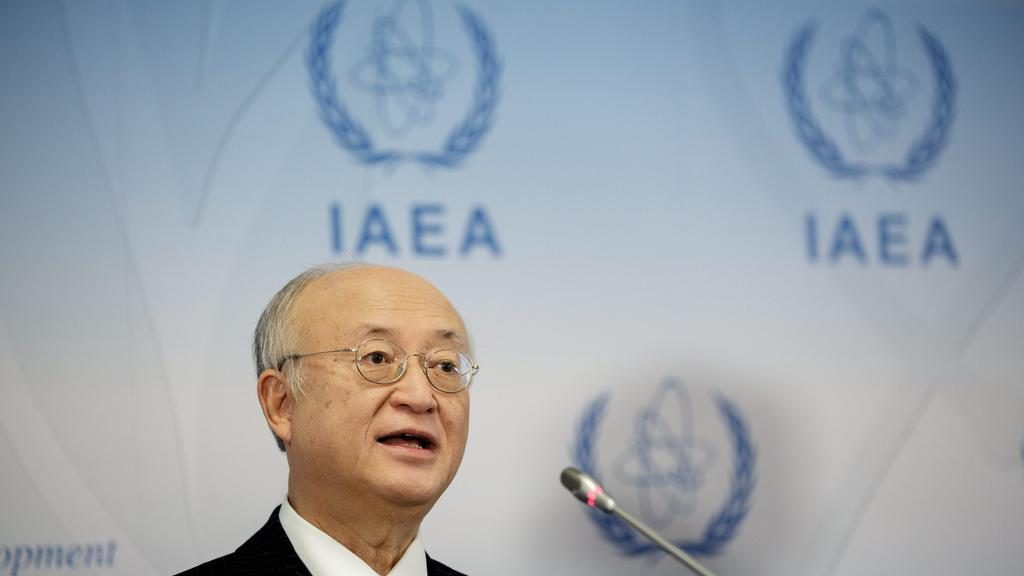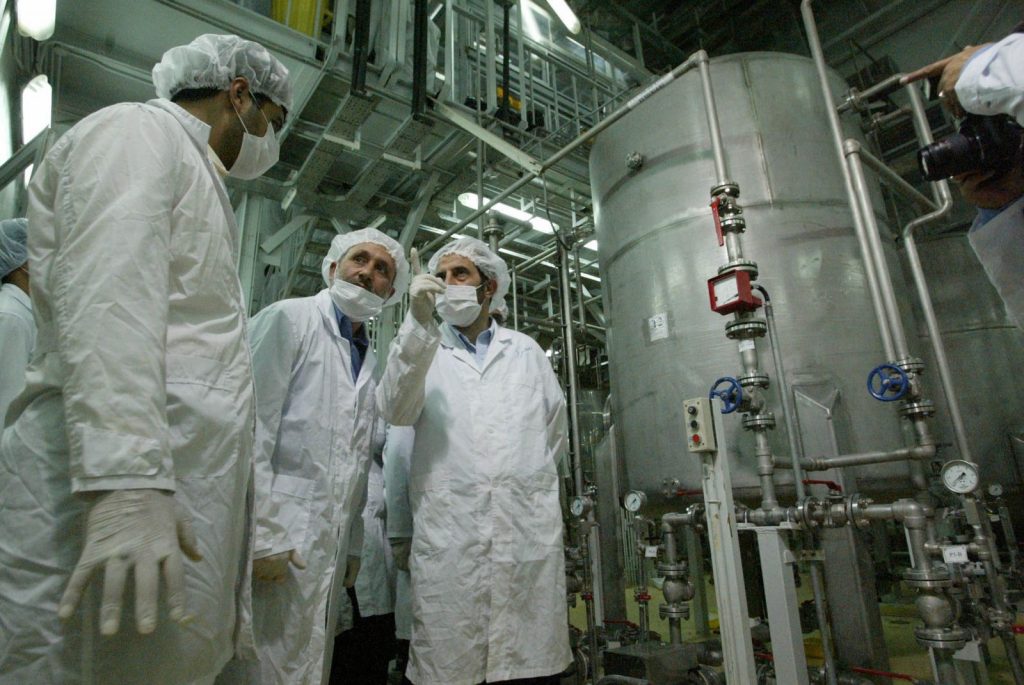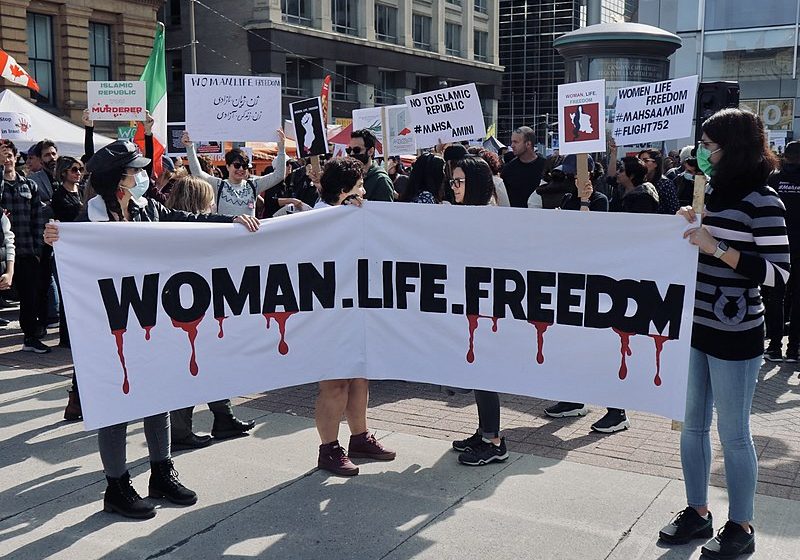Australia/Israel Review
Inspection and Misdirection
Dec 19, 2018 | Raphael Ofek

IAEA impotence on Iran
Notwithstanding the US withdrawal from the Joint Comprehensive Plan of Action (JCPOA) nuclear deal with Iran and restoration of sanctions on Teheran, the International Atomic Energy Agency (IAEA) confirmed in its most recent quarterly report (Nov. 12) that Iran continues to comply with the JCPOA. The report is an almost word-for-word copy of last year’s quarterly reports on nuclear verification and monitoring in Iran. It takes no account whatsoever of the revelations earlier this year by Israeli intelligence about Iran’s covert nuclear weaponisation. Those findings were presented to the international community by Israeli PM Binyamin Netanyahu on April 30 and at the UN General Assembly in New York on Sept. 27.
In his speech to the UN General Assembly, Netanyahu demanded that IAEA director general Yukiya Amano dispatch inspectors to a second secret facility exposed recently in Teheran.
According to Netanyahu, the facility has been identified by Israeli intelligence as an atomic warehouse in which massive amounts of equipment and material for Iran’s secret nuclear weapons program are stored. Netanyahu urged Amano, “Go and inspect this atomic warehouse immediately before the Iranians clean it out… While you’re at it, inspect the other sites. Once and for all, tell the world the truth about Iran.”
But Amano didn’t pick up the gauntlet. Instead, he said this on Oct. 2:
The Agency uses all safeguards [and] relevant information available to it but it does not take any information at face value. In line with established safeguards [and] practices, all information obtained, including from third parties, is subject to rigorous review and assessed together with other available information to arrive at an independent assessment based on the Agency’s own expertise. It is not the practice of the Agency to publicly discuss issues related to any such information… The Agency’s verification activities in Iran are being carried out based on the Comprehensive Safeguards Agreement (CSA) concluded with Iran and the Additional Protocol that Iran is provisionally implementing. In addition, the Agency is also carrying out verification and monitoring of Iran’s nuclear-related commitments under the Joint Comprehensive Plan of Action (JCPOA). These activities will continue to be carried out within the parameters of the relevant decisions and resolutions of the IAEA Board of Governors and the UN Security Council as appropriate.
Moreover, the Washington-based Institute for Science and International Security has accused the IAEA of “failing to mention how exactly it is implementing Section T, given that it recently failed to act on information that Iran was moving relevant equipment from a warehouse identified by Israel.” Section T of the JCPOA refers to restrictions on “weaponisation” – research and other activities that could result in a nuclear explosive device and from which Iran has agreed to refrain.
Amano’s Oct. 2 statement could have been spoken by his predecessor as IAEA director, Egyptian diplomat Muhammad El-Baradei. Despite uncovering hidden elements of Iran’s nuclear program in 2002, including construction of the Natanz uranium enrichment plant and the Arak heavy-water reactor plan, which Iran had not declared to the IAEA, Baradei downplayed the military dimensions of the Iranian nuclear effort.
The first IAEA quarterly report, which reported the agency’s findings in Iran during the first half of 2003, was published in June of that year. The inspectors found that Teheran had violated the Safeguards Agreement with the IAEA, to which Iran had committed itself by joining the Non-Proliferation of Nuclear Weapons Treaty (NPT). But Iran’s violations of the Safeguards Agreement were not identified as such in the report. Instead, they were reported in softened terms, like “failures”.
In contrast, the IAEA’s November 2004 report was quite critical, reflecting new findings as well as the decisive stance against Teheran led by Olli Heinonen of Finland, then the IAEA deputy director general and head of its Department of Safeguards.
The May 2008 IAEA report included, for the first time, a chapter entitled “Possible Military Dimensions,” which described Iranian activities in technologies involved with the development of a nuclear explosive device, as well as its installation as a warhead on the Shehab-3 ballistic missile.
Amano began his tenure as IAEA director general on Dec. 1, 2009. In the early years of his term, former IAEA senior officials accused him of pro-Western and anti-Iranian bias, and of over-reliance on unverified intelligence. The main triggers for this were IAEA reports on Iran during those years, which were very critical.
It is worth noting, in particular, the agency’s November 2011 report, which included a detailed picture of Iran’s effort to develop nuclear weapons. Moreover, the report emphasised in its summary: “The Agency has serious concerns regarding possible military dimensions to Iran’s nuclear programme. After assessing carefully and critically the extensive information available to it, the Agency finds the information to be, overall, credible. The information indicates that Iran has carried out activities relevant to the development of a nuclear explosive device.” Also, the August 2013 report said: “Iran is not providing the necessary cooperation, including by not implementing the Additional Protocol.”
The turning point for Amano appears to have been Nov. 11, 2013, when he signed, together with Ali Akbar Salehi, the president of the Atomic Energy Organisation of Iran, a “Joint Statement on a Framework for Cooperation.” On Nov. 24, 2013, in Geneva, the P5+1 countries (the US, Russia, China, France, the United Kingdom and Germany) signed the interim JCPOA agreement with Iran. In signing, Iran agreed to freeze portions of its nuclear activities in exchange for a decrease in economic sanctions.
The European Union was a bridesmaid to the agreement.
On July 14, 2015, the P5+1 countries and Iran signed the JCPOA agreement. The IAEA was attached to it as the party responsible for inspecting Iran’s implementation of its terms. It appears that the desire of the P5+1 and the EU to reach an agreement with Iran at almost any price rendered Amano, already leaning in that direction, entirely willing to elide Iranian violations.
One of the questionable issues in the JCPOA deal was the planned conversion of the Fordow Enrichment Plant into a “nuclear, physics and technology centre.” Particularly odd was the decision to leave 1,044 IR-1 centrifuges in the plant (not operable, but easily reactivated), and to modify 348 centrifuges (that have not been used for enrichment) to produce stable isotopes.

Iran’s Fordow enrichment plant
From a technological standpoint, the possibility of converting Fordow’s centrifuges, which are designed for uranium enrichment, into equipment to be used for the separation of stable isotopes is doubtful. It is probably easier to convert a tank into a tractor.
Hence, the part of the JCPOA that deals with stable isotope separation at Fordow is probably either nonsense or deception. In fact, Iranian President Hassan Rouhani said, on Aug. 3, 2017, “We maintained Fordow in the JCPOA so that if we want, we can start enriching uranium to 20% within five days.”
Another example that characterises the weakness of the JCPOA is the matter of the heavy water vessel (the technical term is “calandria”) built by Iran near Arak, the purpose of which was to produce plutonium for nuclear weapons. It was settled that it would be sufficient for the vessel to be removed from the reactor building while remaining in Iran. However, it was to be made inoperable by filling its openings with concrete.
It was noted in the IAEA report of Jan. 16, 2016 and in all other reports until now that “[t]he calandria was removed from the reactor and rendered inoperable during preparation for Implementation Day and has been retained in Iran.” But Salehi, the president of the Atomic Energy Organisation of Iran, threatened in September 2017 that Teheran can quickly resume its military nuclear program. In remarks translated by MEMRI (Middle East Media Research Institute), he said this about the heavy water reactor:
“We actually poured cement only into some of the reactor’s [external] pipes, several centimetres in diameter and two to three metres long, not into the reactor itself. If we are instructed to restore the former reactor and advance the former program… we will remove the front and back parts of these pipes and put in new pipes, which will take only several months.”
Hamid Baeidinejad, the Iranian Ambassador in London, who was a member of Iran’s negotiating team at the JCPOA discussions in Vienna, confirmed in tweets on Jan. 21-22 (also translated by MEMRI) that Iran had filled only the core’s holes with cement so that it can reactivate it when necessary. He added details on what had gone on behind the scenes in Vienna:
“After we forced the members of the P5+1 to allow us to preserve the reactor at Arak as a heavy water reactor, and to modernise it, they claimed that modernising the core … meant replacing it with a new one. In order to prevent the misuse, or the possible use [of the old calandria], they insisted on sending it outside Iran. … Iran objected to this, and noted that it would not send any of its nuclear equipment out of the country. After lengthy talks, we realised that there was a need to find a technical way to prevent the immediate use of the core. They proposed welding the core, which is steel, and cutting it into pieces. … Iran opposed this proposal and noted that it wants to put the core in a museum on public display… Ultimately, it was suggested that the holes of the core, not the core itself, be filled with cement so that it could not be used immediately.”
The JCPOA deal gave Iran tailwind and funding for its efforts to develop ballistic missiles, undermine stability in the Middle East and continue sowing terror in the world. It has been assisted by the IAEA’s limp conduct against Iran in recent years, despite the many holes in the JCPOA, as well as the support of the EU, which insists on maintaining the agreement as it is.
However, due to Israel’s firm stand, together with the United States under President Trump, there is now an effort to change the situation. A recent report in Axios indicates that State Department officials have said that Washington will press the IAEA to examine the Israeli revelations about Iran’s nuclear program. This raises hope that Teheran will either have to agree to modify the deal or be replaced by a more liberal regime.
Lt. Col. (res.) Dr. Raphael Ofek is a research associate at the Begin-Sadat (BESA) Centre for Strategic Studies at Bar Ilan University, and is an expert in the field of nuclear physics and technology who served as a senior analyst in the Israeli intelligence community. © BESA Centre (besacenter.org), reprinted by permission, all rights reserved.






